Aaron Palmer
Certifying Adapters: Enabling and Enhancing the Certification of Classifier Adversarial Robustness
May 25, 2024
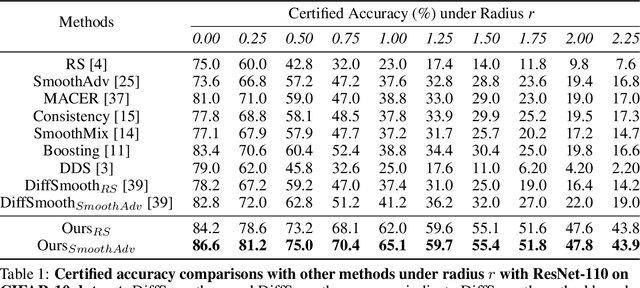
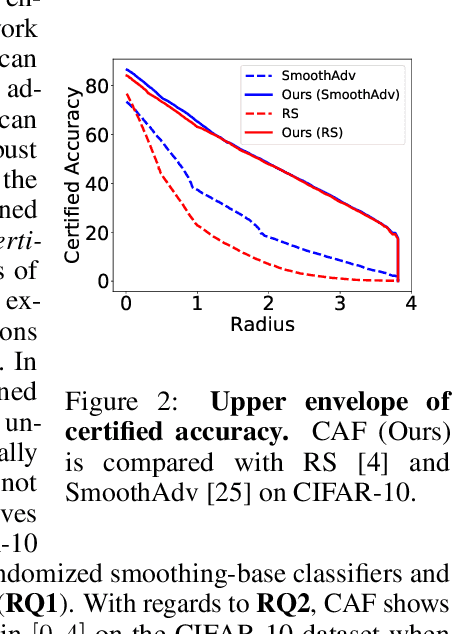

Abstract:Randomized smoothing has become a leading method for achieving certified robustness in deep classifiers against l_{p}-norm adversarial perturbations. Current approaches for achieving certified robustness, such as data augmentation with Gaussian noise and adversarial training, require expensive training procedures that tune large models for different Gaussian noise levels and thus cannot leverage high-performance pre-trained neural networks. In this work, we introduce a novel certifying adapters framework (CAF) that enables and enhances the certification of classifier adversarial robustness. Our approach makes few assumptions about the underlying training algorithm or feature extractor and is thus broadly applicable to different feature extractor architectures (e.g., convolutional neural networks or vision transformers) and smoothing algorithms. We show that CAF (a) enables certification in uncertified models pre-trained on clean datasets and (b) substantially improves the performance of certified classifiers via randomized smoothing and SmoothAdv at multiple radii in CIFAR-10 and ImageNet. We demonstrate that CAF achieves improved certified accuracies when compared to methods based on random or denoised smoothing, and that CAF is insensitive to certifying adapter hyperparameters. Finally, we show that an ensemble of adapters enables a single pre-trained feature extractor to defend against a range of noise perturbation scales.
Distilling Adversarial Robustness Using Heterogeneous Teachers
Feb 23, 2024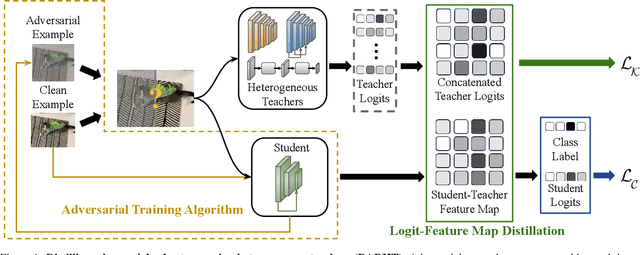
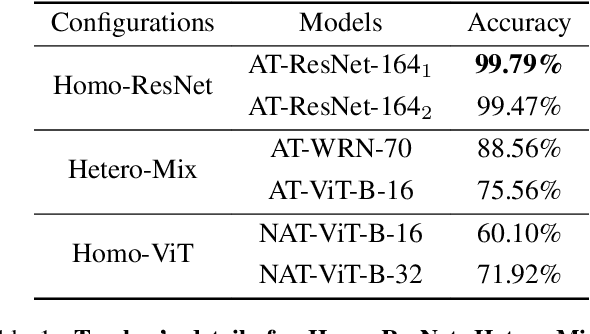
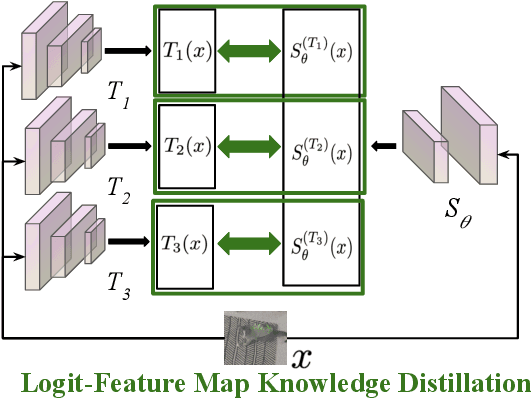

Abstract:Achieving resiliency against adversarial attacks is necessary prior to deploying neural network classifiers in domains where misclassification incurs substantial costs, e.g., self-driving cars or medical imaging. Recent work has demonstrated that robustness can be transferred from an adversarially trained teacher to a student model using knowledge distillation. However, current methods perform distillation using a single adversarial and vanilla teacher and consider homogeneous architectures (i.e., residual networks) that are susceptible to misclassify examples from similar adversarial subspaces. In this work, we develop a defense framework against adversarial attacks by distilling adversarial robustness using heterogeneous teachers (DARHT). In DARHT, the student model explicitly represents teacher logits in a student-teacher feature map and leverages multiple teachers that exhibit low adversarial example transferability (i.e., exhibit high performance on dissimilar adversarial examples). Experiments on classification tasks in both white-box and black-box scenarios demonstrate that DARHT achieves state-of-the-art clean and robust accuracies when compared to competing adversarial training and distillation methods in the CIFAR-10, CIFAR-100, and Tiny ImageNet datasets. Comparisons with homogeneous and heterogeneous teacher sets suggest that leveraging teachers with low adversarial example transferability increases student model robustness.
Auto-Encoding Goodness of Fit
Oct 12, 2022
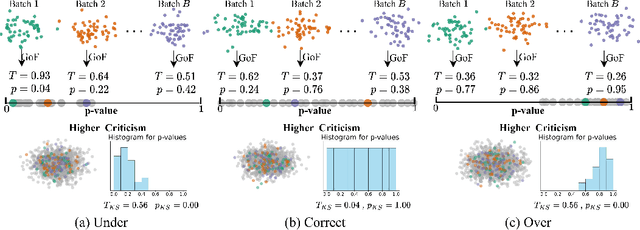


Abstract:For generative autoencoders to learn a meaningful latent representation for data generation, a careful balance must be achieved between reconstruction error and how close the distribution in the latent space is to the prior. However, this balance is challenging to achieve due to a lack of criteria that work both at the mini-batch (local) and aggregated posterior (global) level. Goodness of fit (GoF) hypothesis tests provide a measure of statistical indistinguishability between the latent distribution and a target distribution class. In this work, we develop the Goodness of Fit Autoencoder (GoFAE), which incorporates hypothesis tests at two levels. At the mini-batch level, it uses GoF test statistics as regularization objectives. At a more global level, it selects a regularization coefficient based on higher criticism, i.e., a test on the uniformity of the local GoF p-values. We justify the use of GoF tests by providing a relaxed $L_2$-Wasserstein bound on the distance between the latent distribution and target prior. We propose to use GoF tests and prove that optimization based on these tests can be done with stochastic gradient (SGD) descent on a compact Riemannian manifold. Empirically, we show that our higher criticism parameter selection procedure balances reconstruction and generation using mutual information and uniformity of p-values respectively. Finally, we show that GoFAE achieves comparable FID scores and mean squared errors with competing deep generative models while retaining statistical indistinguishability from Gaussian in the latent space based on a variety of hypothesis tests.
VIGAN: Missing View Imputation with Generative Adversarial Networks
Nov 01, 2017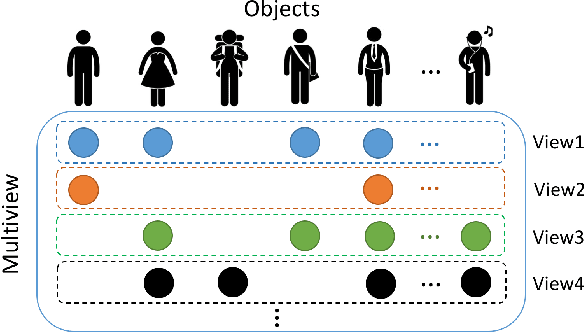
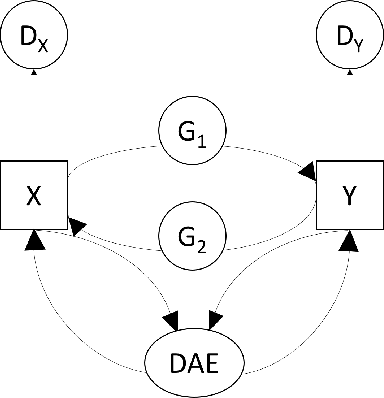
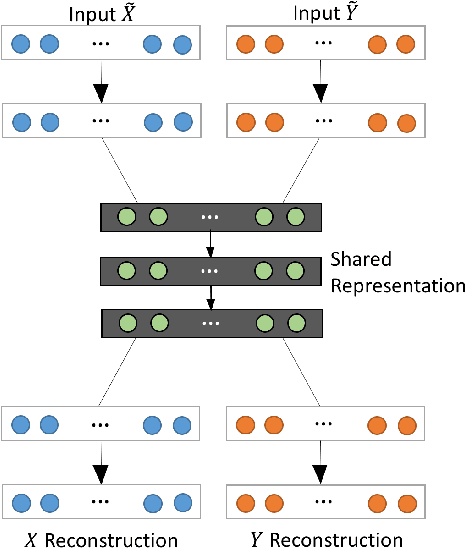
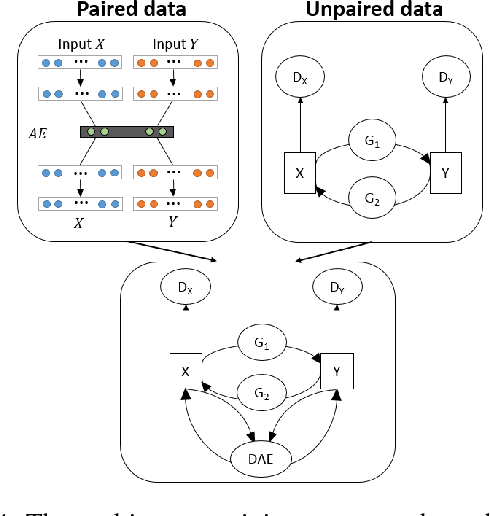
Abstract:In an era when big data are becoming the norm, there is less concern with the quantity but more with the quality and completeness of the data. In many disciplines, data are collected from heterogeneous sources, resulting in multi-view or multi-modal datasets. The missing data problem has been challenging to address in multi-view data analysis. Especially, when certain samples miss an entire view of data, it creates the missing view problem. Classic multiple imputations or matrix completion methods are hardly effective here when no information can be based on in the specific view to impute data for such samples. The commonly-used simple method of removing samples with a missing view can dramatically reduce sample size, thus diminishing the statistical power of a subsequent analysis. In this paper, we propose a novel approach for view imputation via generative adversarial networks (GANs), which we name by VIGAN. This approach first treats each view as a separate domain and identifies domain-to-domain mappings via a GAN using randomly-sampled data from each view, and then employs a multi-modal denoising autoencoder (DAE) to reconstruct the missing view from the GAN outputs based on paired data across the views. Then, by optimizing the GAN and DAE jointly, our model enables the knowledge integration for domain mappings and view correspondences to effectively recover the missing view. Empirical results on benchmark datasets validate the VIGAN approach by comparing against the state of the art. The evaluation of VIGAN in a genetic study of substance use disorders further proves the effectiveness and usability of this approach in life science.
 Add to Chrome
Add to Chrome Add to Firefox
Add to Firefox Add to Edge
Add to Edge